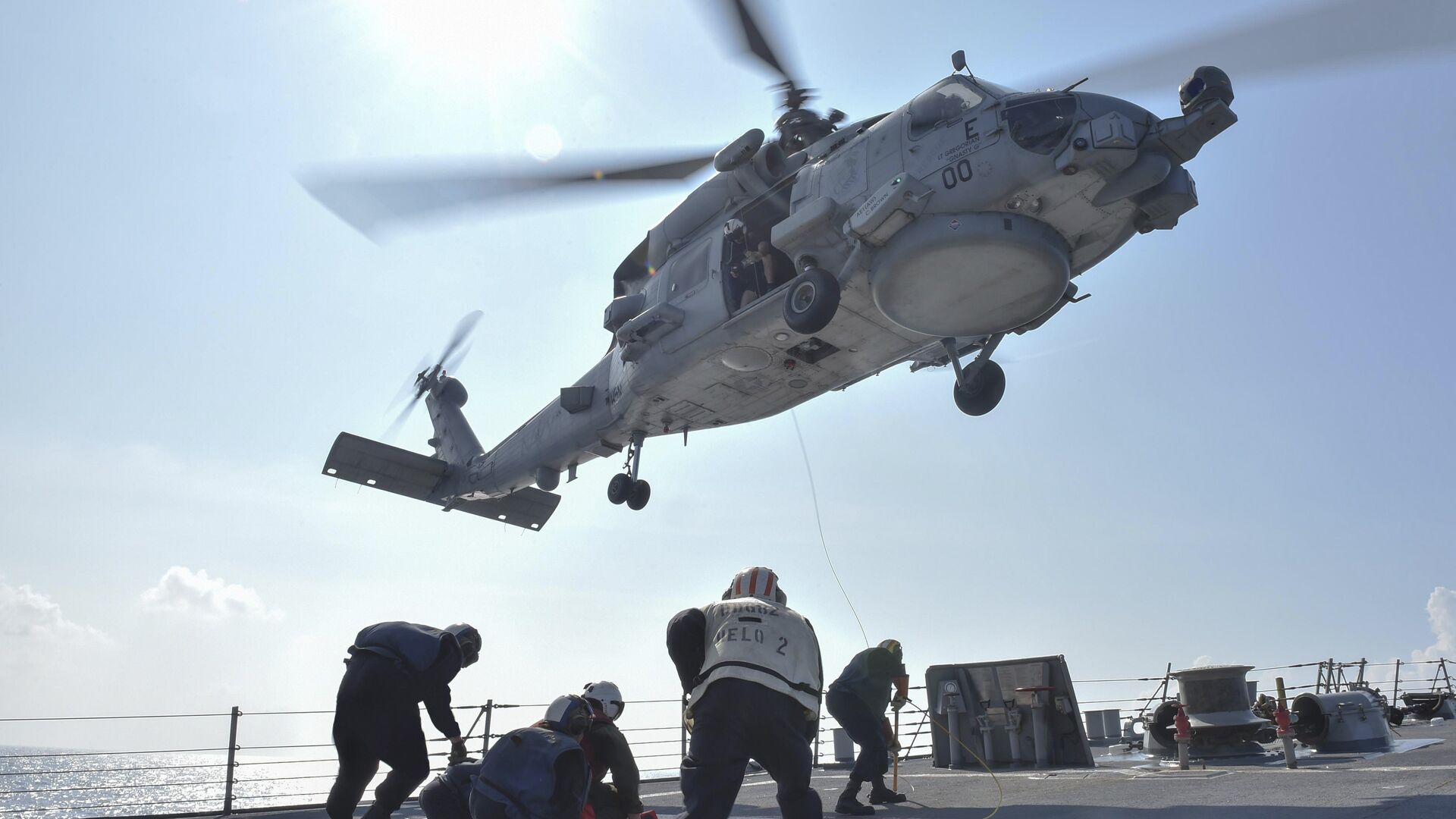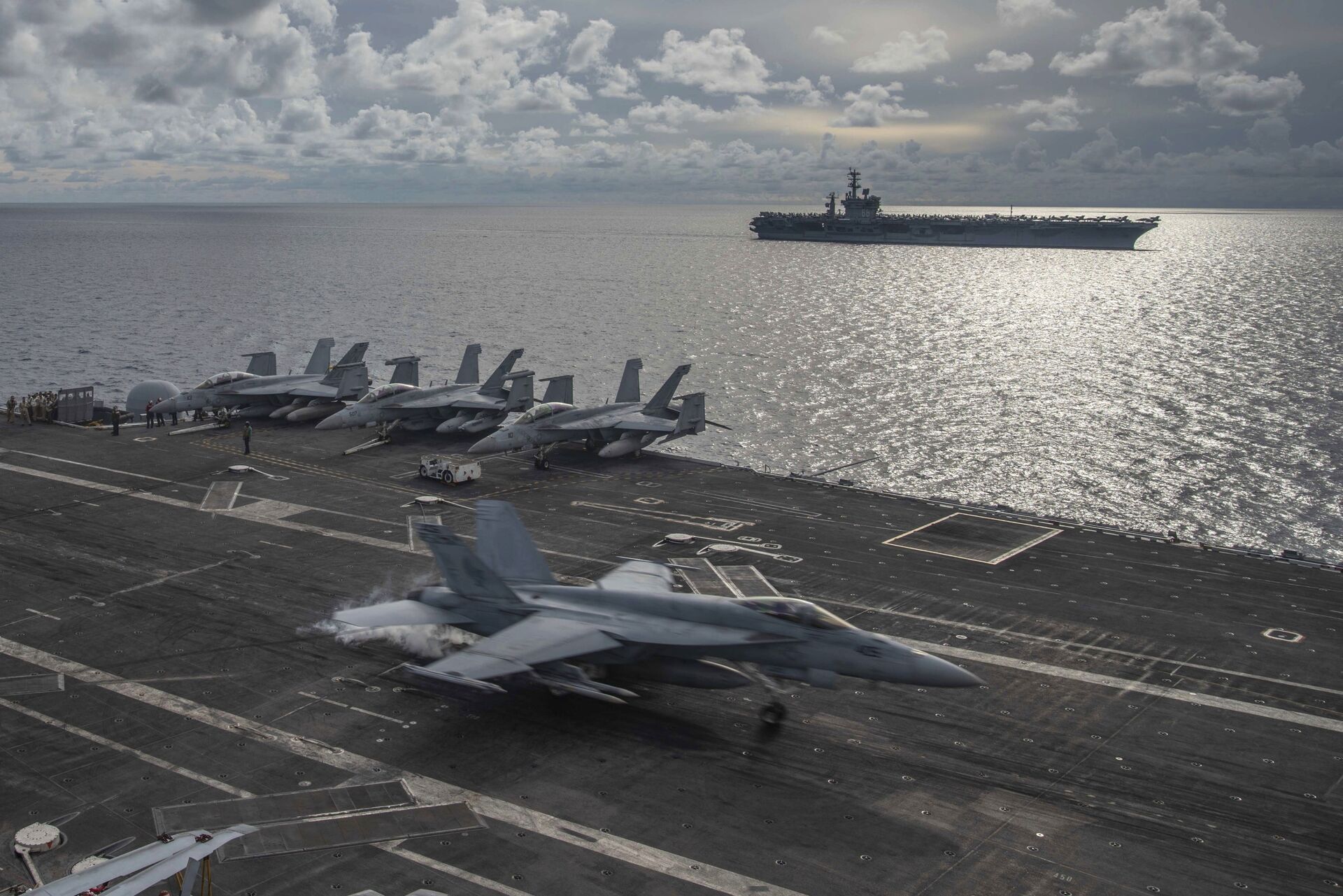Beijing Says ‘Fundamental Solution’ to Situations at Sea is End to US Drills in Chinese Waters
00:12 GMT 31.12.2021 (Updated: 18:35 GMT 19.10.2022)

© REUTERS / U.S. Navy
Subscribe
After a US attack submarine was severely damaged by an underwater collision in the South China Sea earlier this year, the Chinese government called the US “irresponsible,” accusing it of a lack of transparency about what its sub was doing 7,000 miles from home.
After a year’s lapse, Chinese and American military leaders resumed talks on maintaining maritime safety earlier this month.
The three-day virtual talks were held from December 15 to December 17 and included representatives from the US Indo-Pacific Command, US Pacific Fleet and US Pacific Air Forces on one side, and from the People’s Liberation Army (PLA) and Air Force (PLAAF) on the other. They were held under the auspices of the Military Maritime Consultative Agreement (MMCA), a 1998 deal that Maj. Gen. Christopher McPhillips, INDOPACOM’s director for strategic planning and policy, described in a recent news release as “a guardrail for military encounters to reduce risk in the air and at sea, helping the two sides manage competition responsibly.”
At the meeting, they discussed ways to update the Rules of Behavior for Safety of Air and Maritime Encounters, signed in 2015.
“The prolonged and intensive reconnaissance and exercises by the US military ships and aircraft and their frequent provocative activities are the source of Sino-US maritime and aerial security risks,” Senior Colonel Tan Kefei, a spokesperson for the Chinese Ministry of National Defense, told the South China Morning Post on Thursday, reflecting the comments the Chinese representatives had passed to their American counterparts.
“Cessation of hostile naval and aerial operations by the US is the fundamental solution to the Sino-US military security issues,” he added.
For the first time last year, the talks didn’t happen, although it wasn’t because of the COVID-19 pandemic: China decided not to come, saying US actions had made the meeting impossible.

USS Ronald Reagan (CVN 76), as USS Nimitz (CVN 68) in the South China Sea
© AP Photo / Mass Communication Specialist 2nd Class Samantha Jetzer
The meeting would have come at a time that tensions were especially high: it wasn’t just a US U-2 spy plane flying through Chinese airspace, but that due to then-US President Donald Trump’s contestation of the November 2020 US presidential election, senior military officials in China feared he might deliberately provoke a war with China as an excuse to hold onto power. US Army Gen. Mark Milley, chairman of the Joint Chiefs of Staff, told Congress in September that he phoned his Chinese counterparts twice in Trump’s final months to assuage their fears about a surprise attack.
For several years, US reconnaissance and maritime patrol aircraft have zigzagged their way across the South and East China Seas, with multiple flights per day. They’ve taken some pretty risky practices, including disguising themselves as civilian airliners in order to fly close to Chinese airspace, and hiring out civilian contractors to fly business jets rigged up with monitoring equipment over the waterway, as well.
US warships have also regularly performed what Washington calls “freedom of navigation operations” (FONOPS), in which they deliberately sail through waters claimed by China - or another country, such as Russia or Vietnam - in order to protest what they say are “excessive maritime claims.”
In the South and East China Seas, Chinese territorial claims overlap with those of several other nations, including Japan in the East China Sea and the Philippines, Vietnam, Malaysia, and Brunei in the South China Sea. While Beijing has been working with the Association of Southeast Asian Nations (ASEAN) to advance a mutually agreed upon Code of Conduct for the South China Sea, the US has postured as if the only solution is military confrontation that will force China to give up its claims.
However, a year later, the situation is scarcely warmer. The Quad Security Dialogue between the US, Japan, Australia and India has taken shape and the US, UK, and Australia forged a new AUKUS alliance, both of which are clearly aimed at “containing” China.
Tan condemned the AUKUS deal to provide Australia, a country with no nuclear technology, with nuclear-powered attack submarines, saying it risked nuclear proliferation across the region. He said that the disastrous US occupation of Afghanistan, which ended in August with a Taliban victory, had demonstrated the chaos expanding US military deployments could produce.



